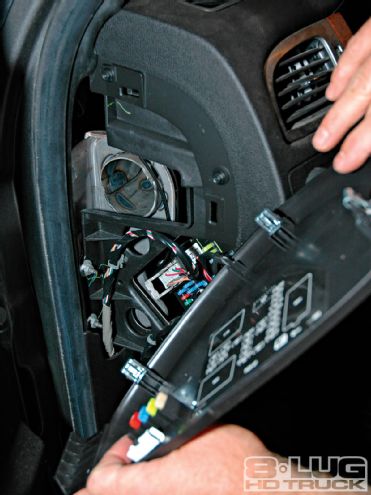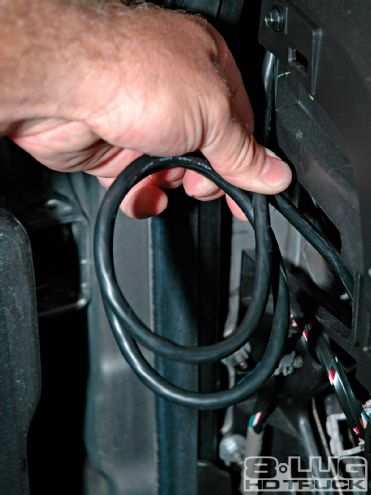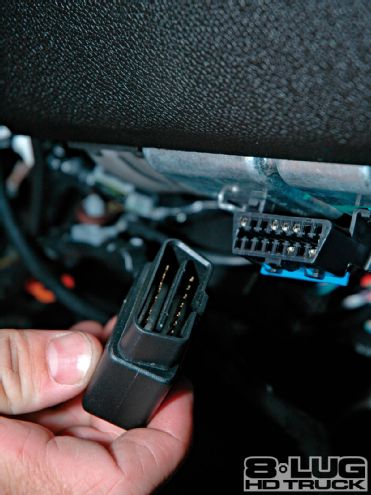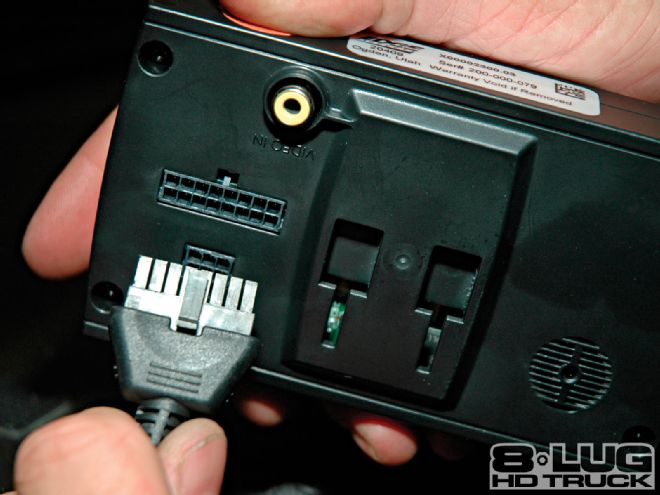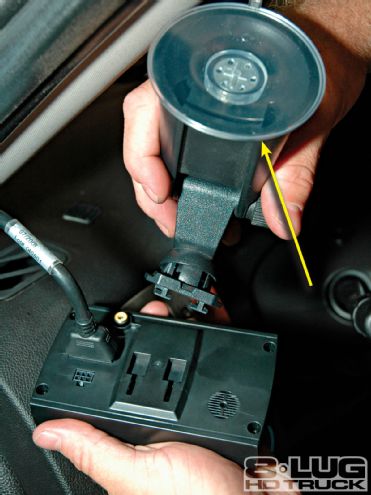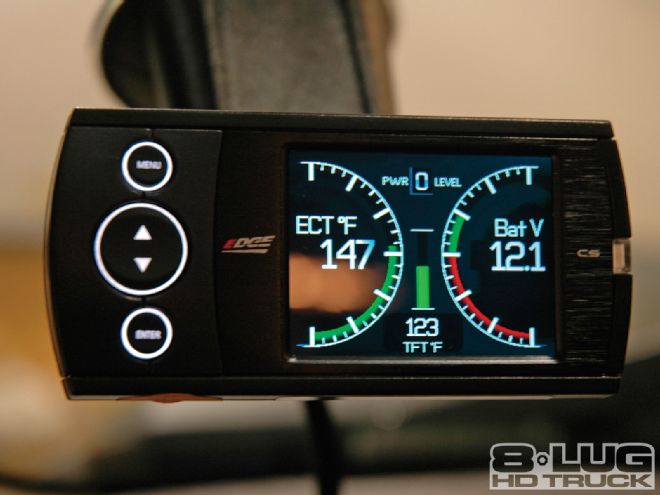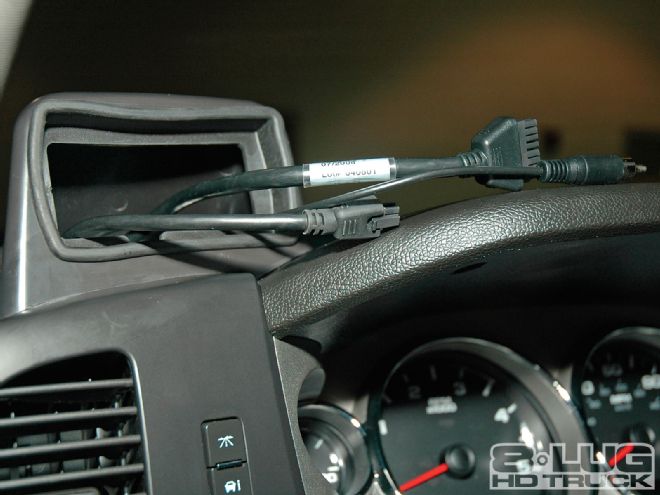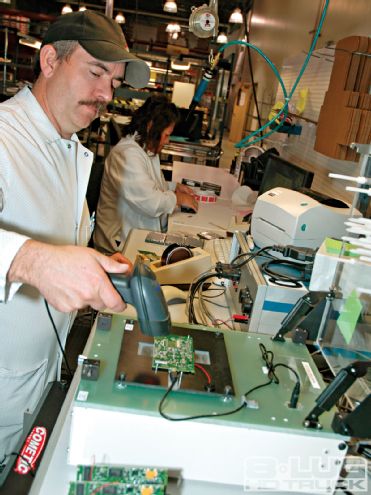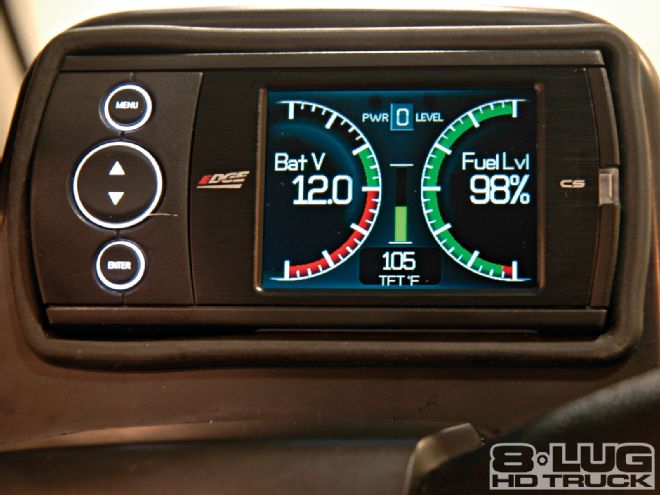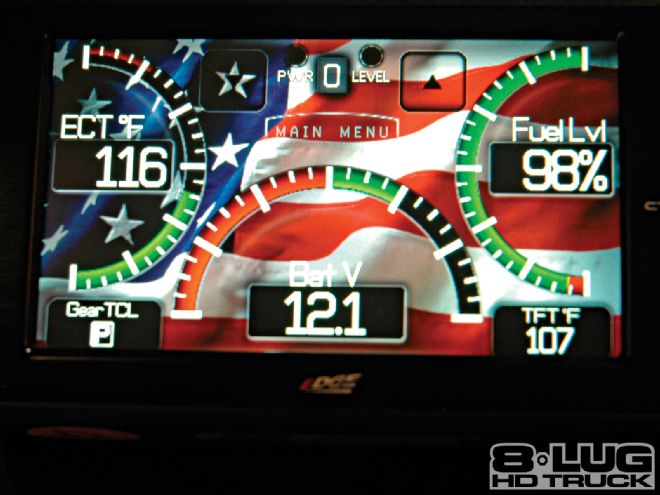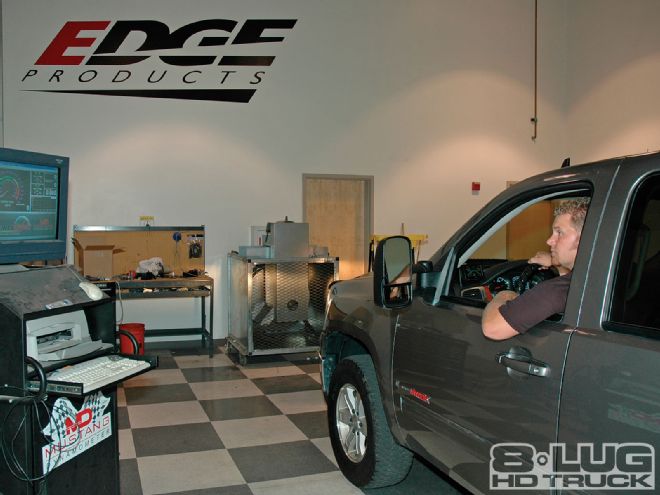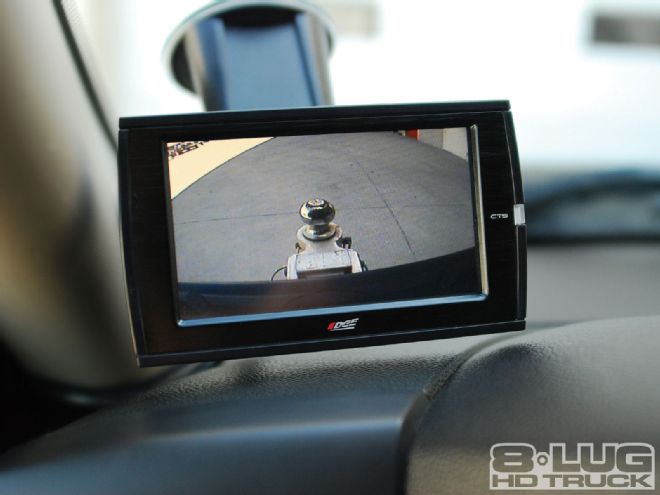Seems as though lately all the technology for increasing power and performance in fullsize heavy-duty trucks has been aimed at diesels. Just when we thought Edge Products had pulled all the electronic rabbits out of its hat for oil-burners, the introduction of the new Evolution CS (color screen) for gas engines was a breath of fresh air. From the pioneers of display-based technology and engine performance management, the all-new Evolution CS for Chevy, GMC, and Ford-both diesel and gas versions-is now available.

| The Edge Evolution CT and CTS come ready to install with detailed instructions.
During a recent visit to the Edge facilities in Ogden, Utah, we installed the new Evolution CS on a stock '07 GMC Sierra with the impressive 6.0L Vortec MAX. The install could not have been easier. Removing the side panel on the driver side of the dash (similar to Ford and Chevy), the CS cable was routed up to the top. Excess cable was neatly coiled and zip-tied out of the way, leaving about 6 inches sticking out. The other end just plugs into the OBD II port under the dash. That's almost it!
The new Evolution CS in-cab monitor includes the same features we loved about the Evolution, all in a more rugged case. User-friendly buttons and an easy-to-navigate menu give you total information control. A light sensitivity meter automatically adjusts the brightness for improved viewing.
The Evolution CS is supplied with a multipurpose windshield mount, allowing you to place the monitor on any smooth, flat surface. An option we liked better was the Edge custom-mounting pod-available for all trucks-which makes the Evolution CS screen look like it was factory installed.
In less than 30 minutes, we had added four tuning levels with up to 40 additional horsepower and 40 lb-ft of torque. The Evolution CS communicates along the engine's CAN-BUS data stream, from which it receives vital engine, transmission, and fuel system information. This enables it to provide smooth and precise power curves that are truly custom, rather than just an offset from stock.
Level 1: Transmission Tuning
Level 2: Towing-12 hp and 12 lb-ft of torque
Level 3: Economy-20 hp and 20 lb-ft of torque
Level 4: Performance-40 hp and 40 lb-ft of torque
The Evolution CS can sound an alert when certain engine parameter levels are met, including: engine temp, transmission temp, and speed.
If you're into racing, you can keep track of your performance by recording minimum and maximum values for a variety of parameters, including: max engine coolant temp, 0-to-60 times, quarter-mile times, max RPM, max speed, and transmission temp.
If that isn't enough, you can also recalibrate for different size tires. (Features may vary by vehicle make and model.)
For a little test run in our '07 GMC Sierra, we headed up Ogden Canyon into the Wasatch Mountains toward Monte Cristo Pass. In Level 2 (Tow-12 hp, 12 lb-ft of torque), we could already feel a significant difference in both acceleration and the sound of the engine. Level 4 (Performance-40 hp, 40 lb-ft of torque) produced an automatic grin as the GMC Vortec MAX broke the wheels loose for a second, pressing us back into the bucket seats.
There is also a new Evolution CTS (color touch screen) version, which includes all the same features and more. A digital gauge display on a full-color, high-resolution, 4.3-inch touch screen device replaces the buttons. It comes equipped with a video-in port, which allows users to connect to Edge's state-of-the-art backup camera (sold separately, including night vision and locking license plate mount), or any compatible off-the-shelf backup camera or video source.
The Evolution CS and CTS raise the bar for power, function, and just plain fun. Street price for the Evolution CS or CTS will range from $439 to $849, depending on year, make, and model. The optional rearview camera for the CTS sells for $299. For Ford, GMC, and Chevy versions (both gas and diesel), check www.edgeproducts.com for the latest products, and prepare to be amazed.
By touching the easy-to-scroll buttons, we could read:
MPH (Miles Per Hour),
RPM (Revolutions Per Minute),
ECT (Engine Coolant Temp),
TFT (Trans Fluid Temp),
EOT (Engine Oil Temp),
IAT (Intake Air Temp),
SPARK (Spark Advance),
MAF (Mass Airflow),
BARO (Barometric Pressure),
MAP (Manifold Absolute Pressure),
AAT (Ambient Air Temp),
BATT (Battery Voltage),
DIDL (Desired Idle),
APP (Applied Pedal Position),
EOP (Engine Oil Pressure),
AFC (Airflow Calculated),
FUEL (Fuel Tank Remaining),
LOOP (Loop Status),
POWER (Power Enrichment),
GEAR (Current Gear),
AFP (Alcohol Fuel Percentage),
DCYL (Deactivated Cylinders),
DCD (Distance Cylinders Deactivated),
DCA (Distance Cylinders Activated)
